"Mortal as I am, I know that I am born for a day. But when I follow at my pleasure the serried multitude of the stars in their circular course, my feet no longer touch the Earth." -Ptolemy
As regular readers here will know, earlier this month I went to Glacier National Park, meeting up with an old friend of mine that I hadn't seen in a few years. What you may not have known is that Rich is not just into photography, but he's recently taken an interest in astrophotography, which I started noticing when he started sending me photos like this.
It turned out that this photo wasn't even taken with a tripod; he put the camera on the dash of his car! You can make out the Big Dipper and the orange giant, Arcturus, see that the second star from the end of the handle is actually a binary (Mizar/Alcor), and see the great Coma star cluster, in Coma Berenices, down near the bottom of the photo. That was back in April, and while I was excited to share the sights through my mounted binoculars with Rich, he came up with something to share with all of you. Take a look at this wonderful guest post on DIY astrophotography, along with just a few comments (in italics) from me.
![]() Greetings Starts with a Bang Readers! I hope you have enjoyed this blog as much as I have over the years, and that it has inspired you to dig deeper while exploring our amazing and beautiful universe. Ethan has graciously given the keyboard and mouse over to me to share how his blog (and friendship) has inspired me.
Greetings Starts with a Bang Readers! I hope you have enjoyed this blog as much as I have over the years, and that it has inspired you to dig deeper while exploring our amazing and beautiful universe. Ethan has graciously given the keyboard and mouse over to me to share how his blog (and friendship) has inspired me.
Being a scientist, I am very driven to investigate and understand how the things around me work. One of the best parts of this blog over the years has been the great images that are used to illustrate the various topics. These images inspired me to try taking photographs of the starry sky myself. However, my budget is nowhere near that of NASA’s, so I needed to know how to take good astrophotos but with a limited budget.
First and foremost, I needed a camera with the ability to take long exposures, typically 60 seconds or more. There are plenty of DSLR models with this capability, but this is a budgeted project. Currently, I have a Canon SX220HS. This camera has served me well for taking photos of nature while hiking, but the longest the camera would expose the CCD is 15 seconds. Searching the internet, I came across the Canon Hack Development Kit. Please don’t let ‘hack’ scare you, this is software written for Canon cameras that expands what you can do with them. After reading about this software, I decided to give it a shot. I messed with the settings and found that I could set the shutter speed up to 2048 seconds long. That’s over 30 MINUTES of exposure on a camera that cost around $350 when it was new with a free software upgrade. SCORE!
This is the small point-and-shoot camera that I had been using on my hikes to take photos.
Next, I knew I was going to need something to keep the camera steady and allow me to aim at the part of the sky I wanted to photograph. I settled on Joby Gorillapod. This is a very light weight tripod that I could also take with me into the wildness.
With these in hand, I excitedly headed to the nearby Rocky Mountains to give astrophotography a shot. What I got was surprisingly good!
This was taken at approx. 10pm near Mt. Sherman in Colorado as the moon was rising. The Big Dipper is on the left side, and Polaris (North Star) can be found by following the lower edge of the Big Dipper up and to the right to the first bright star.
This was taken at approx. 10pm near Mt. Sherman in Colorado as the moon was rising. This is a photo showing the Milky Way on the left side with the mountains in the foreground.
Ethan's note: this is only possible under sufficiently dark skies. Good astrophotos can be taken in locations that are below 5 or so on the Bortle Scale, shown below. For what it's worth, a full Moon can turn a perfectly dark sky into an "8" in no time.
With longer exposures, however, I noticed something funny…the stars were no longer points, but arcs of light. I laughed at myself when I got home and checked my photos and I realized, “Duh! Earth spins!”
This was taken at approx. 10pm near Mt. Sherman in Colorado as the moon was rising. This is a photo showing the Big Dipper and Polaris.
This isn’t to say you can’t take great astrophotos while Earth spins us merrily around and around…
This was taken at approx. 9pm near Glacier National Park. This is a photo showing the Big Dipper and Polaris.
This was taken at approx. 10pm near Glacier National Park. This is a photo showing the Big Dipper and Polaris.
Ethan's note: on this night -- the same day we hiked to Grinnell Glacier, Tuesday, September 4th -- while Rich was taking and perfecting these astrophotos, I had set up my binoculars and was manually finding some of the great sights visible with dark skies. While I didn't photograph them, I have found visually comparable photos of some of the most stunning ones, which I'll share.
You’ll notice in these photos that all the stars appear to be rotating around Polaris. This is because Earth’s rotational pole VERY nearly points directly at this star. For readers living south of the equator, you have The Southern Cross. Since Earth’s rotational axes point at these stars and they don’t move across the sky during the night, explorers in antiquity used them for navigational aids.
At this point you might say, “Mission accomplished!” For me, I wanted to know what it would take to account for Earth’s rotation and be able to take photos of any part of the sky for as long as I might like. (Or at least till finished drinking my beer that evening.) Back to research. I found several star tracking mounts to buy, but all cost several hundred dollars. Then I came across this webpage by Gary Seronik. A star tracking platform I could build myself!? Cool! (And cheaper to boot!)
Ethan's note: for any college student in search of a reasonable advanced/electronics lab project, this is an excellent one to propose to your professor!
So following Gary’s plans…
Step 1: Buy ½” birch plywood and make templates. The plywood cost about $9 at Lowes. As best I could tell, you could probably make 4 platforms from the piece I bought.
Step 2: Find a buddy with a jig saw or band saw to cut the pieces out for you. Cost: Beer with a friend. I also sanded down the pieces to clean them up.
Step 3: Buy a ball-head camera mount and the various electronics parts you need. The ball-head mount cost $40, but is pretty nice. You can find cheaper ones for half this price. The various electronic parts cost $50 including the motor used to drive the top platform.Instead of using a 3 V DC motor, I was only able to buy a 6 V model. I had a friend check the electronics due to my swap. Gary’s webpage uses two 0.1 μF capacitors in the circuit to control the drive motor, but my friend suggested a 1.0 μF for the capacitor labeled C2. There’s also a very handy webpage that will show you what resistors you’ll need if you use a motor requiring a different voltage.
Step 4: Construct the electronic control box. This is a bit fancy, but I wanted something with a switch and a quick disconnect for the drive motor. I also chopped off the unused portions of the circuit board to make it fit into the project box.
Step 5: Assemble the drive parts. The piece of threaded brass stock is bent to a specific radius. I used MS PowerPoint to print a circle with this radius and bent it by hand. The large output cog has a sleeve nut.
Ethan's note: you do NOT need to create a circle by using MS Powerpoint and a printer; a simple, analog compass will work just as well.
Close Up: This shows the output cog with the sleeve nut stick out slightly. The sleeve nut is held by the cog’s worm screw to drive the top platform up.
This is the fully assembled platform. At this point I connected the control box and used the stopwatch function on my cell phone to time the speed of the output cog. This needs to be as close as possible to 1 rpm.
Ethan's note: Rich wound up using a variable voltage resistor that is tunable by hand. This is essential, as the rate of your platform's rotation and the requirements of the electronics will vary slightly based on environmental conditions such as temperature.
After testing and adjusting the platform I disassembled it and varnished the wood to make it look good and protect the wood against the weather.
In the end, how did all this hard work turn out? After getting the platform setup with my camera on top and the whole thing pointed at Polaris, the proof is in the photos…
Attempt #1: This was just a random part of the sky with the Milky Way. You can see that the results are much better, especially considering the exposure is twice as long as my earlier shots that had star trails. My aim of the platform’s axis at Polaris isn’t quite right since you can see some trailing.
Ethan's note: aiming directly at Polaris is an amazing way to go, as Polaris is less than 1 degree from true north. However, it is not directly located at the north celestial pole, and so arbitrarily long exposures will still exhibit some trailing. It will appear more severe, for what it's worth, the farther away from the pole star you point your camera.
After some aim adjustments: This was taken at approx. 9pm near Glacier National Park. This is (a portion of) the constellation Cassiopeia on the left side of the photo. NO MORE TRAILS!!
Ethan's note: While Rich was photographing Cassiopeia, I managed to locate the double cluster in Perseus, which looked a lot like this through binoculars.
Still, it isn't as spectacular as it could've been; here's what the double cluster looks like through a truly professional telescope!
Enough of my intrusion; back to Rich.
This was taken at approx. 10pm near Glacier National Park. This is a photo of the star Arcturus. This star is a K-type orange giant star. Arcturus is the fourth brightest star in the night sky in the Northern Hemisphere.
Ethan's note: Arcturus is the brightest star in the northern half of the skies and #4 overall, but the other three are all visible from many places in the Northern Hemisphere during certain times of the year.
This was taken at approx. 10pm near Glacier National Park. The bright blue star in the middle of this photo is Altair. This star is an A-type main sequence star and part of the ‘Summer Triangle.’
Ethan's note: for the first time, I was able to observe Albireo through my binoculars, getting clear, dark summer skies!
Although I had no spikes in my image, the separation between the yellow and (slightly dimmer) blue companion stars was clear, despite having just 20x magnification on the binoculars!
Lastly, this photo looks very strange and green for a reason. While I was on vacation at Glacier National Park this summer AND while I just happened to be snapping a photo of the stars to the north there happened to be an Aurora Borealis!!! This was taken at approx. 11pm near Glacier National Park.
Ethan's note: The Moon had just come up over the horizon and I -- freezing cold after hours in the dark at altitude -- had retreated into my tent. Rich suddenly asked, "Hey, Ethan?" "Yes?" "What does the Aurora Borealis look like?" "Uhh... it's green, it shimmers, and it should be located towards the north." "I think we have the Northern lights tonight."
Little did I know that 4 days earlier, on August 31st, a coronal mass ejection set the stage for the first Aurora Borealis of my life. Faint, blurry and fast-moving, it was still nonetheless spectacular!
There you have it! Starting with a bang, and ending with the knowledge and skills to take pretty good astrophotos all inspired by what you already read on a regular basis. Remember to always be curious about even the simplest things around you, and never be afraid to ask questions. Our universe is an amazing place; you just have to get out there and explore it!
Thanks to Ethan for giving me chance to share what I have learn from his blog and what it has inspired me to do. I hope everyone reading this blog is similarly inspired.
One more note: I was able to spot and see the Andromeda galaxy through binoculars for the first time. It looked somewhat like this (although less pixelated).
After that, Rich gave me the old platform he built, and challenged me to an astrophotography challenge, which is like challenging a paper tiger to a fight.
If you accept my challenge from Facebook
I have challenged Ethan to a contest to see who can take the best astrophoto of the Milky Way’s closest spiral galaxy neighbor, Andromeda, using one of these platforms. (I built a second one for myself.) Stay tuned in the future to see the results and vote on whose photo you think is the best!
![]() Thanks to Rich for an outstanding and incredibly informative guest post, and I hope this inspires at least one among you out there to try it yourself! I'll get the best Andromeda I can and show you the results, but in the meantime, enjoy the Universe for yourself!!
Thanks to Rich for an outstanding and incredibly informative guest post, and I hope this inspires at least one among you out there to try it yourself! I'll get the best Andromeda I can and show you the results, but in the meantime, enjoy the Universe for yourself!!

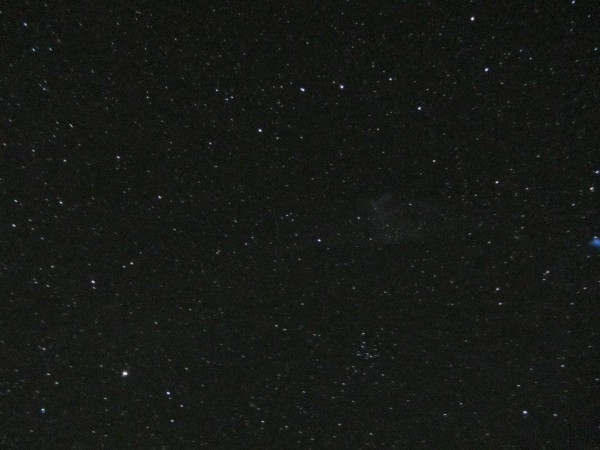
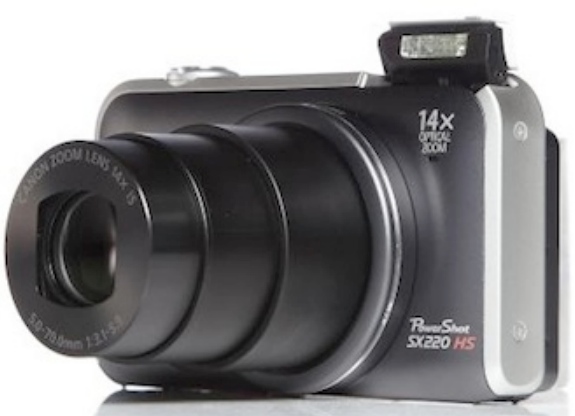


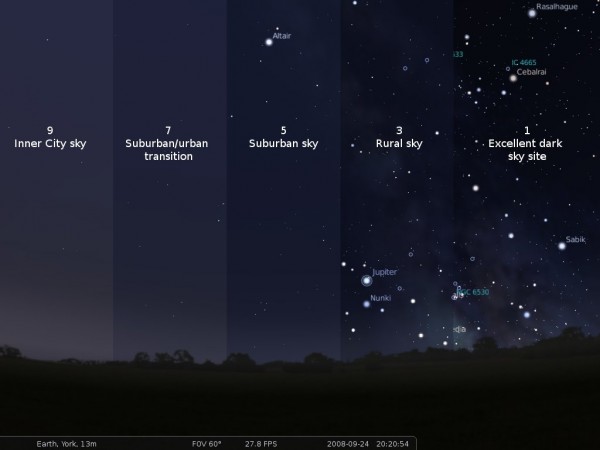
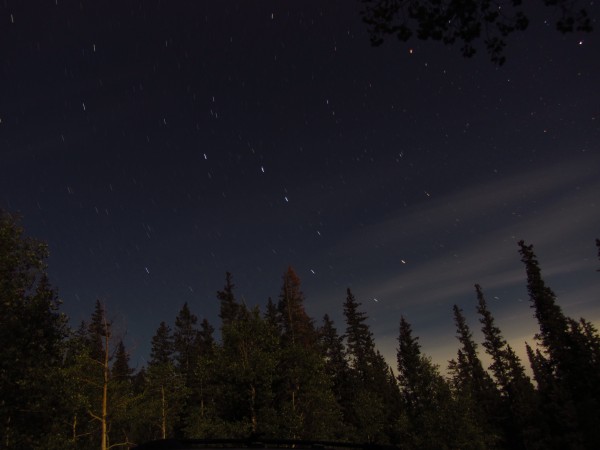

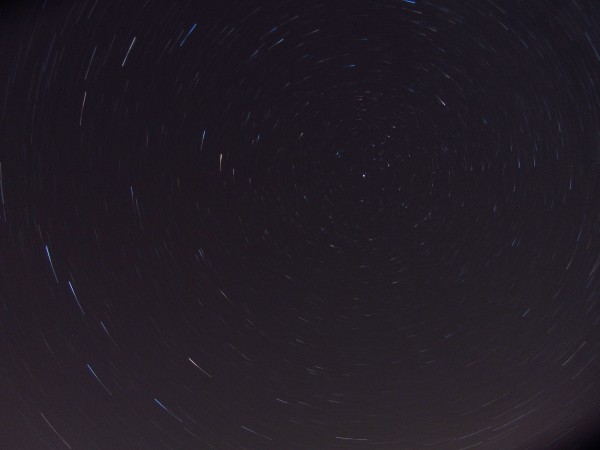
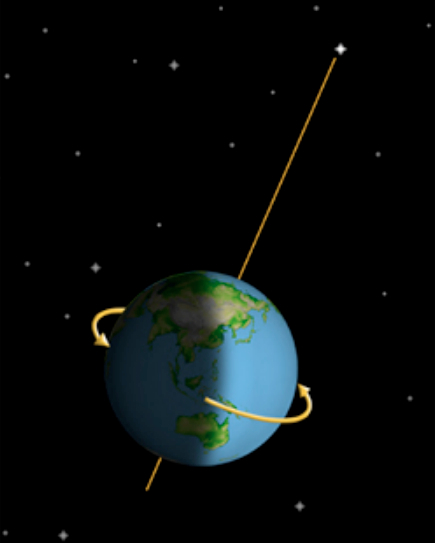



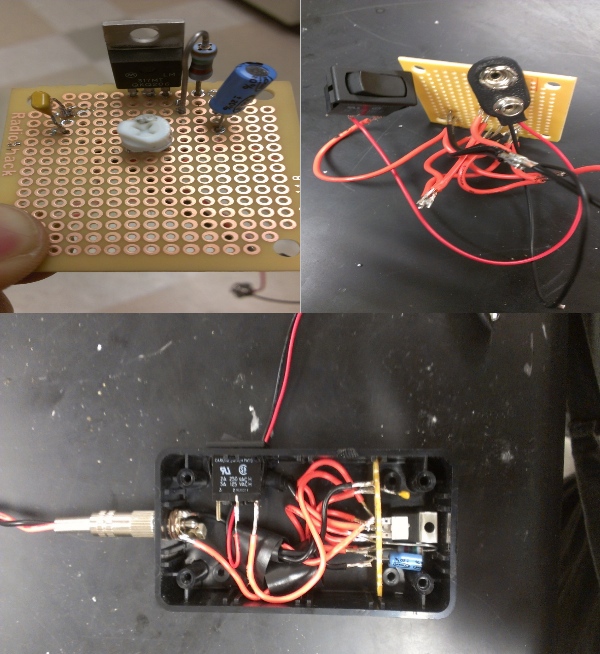


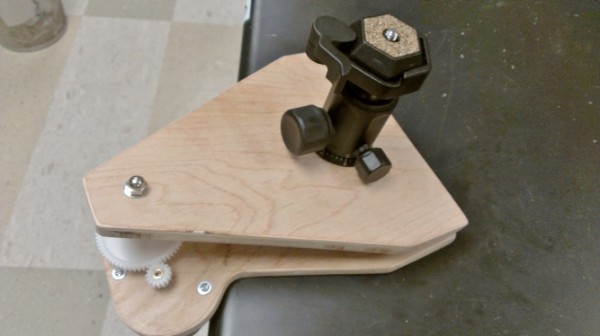
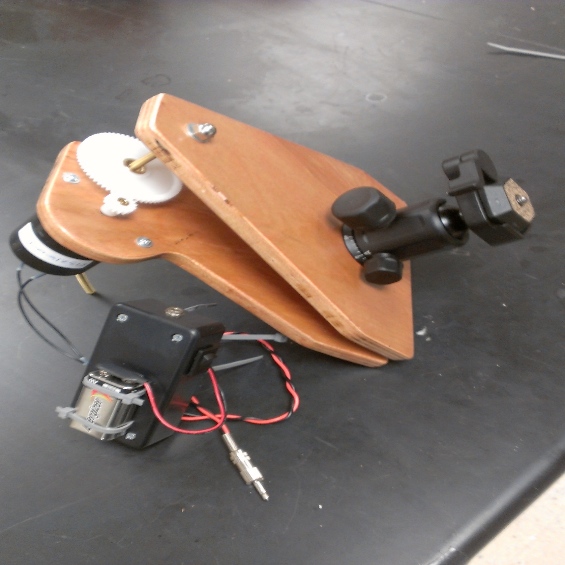

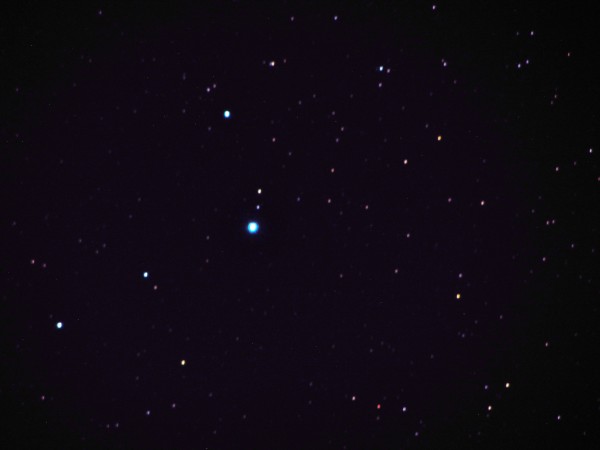
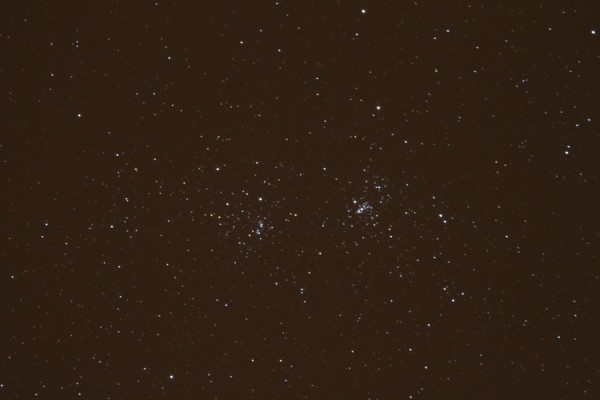
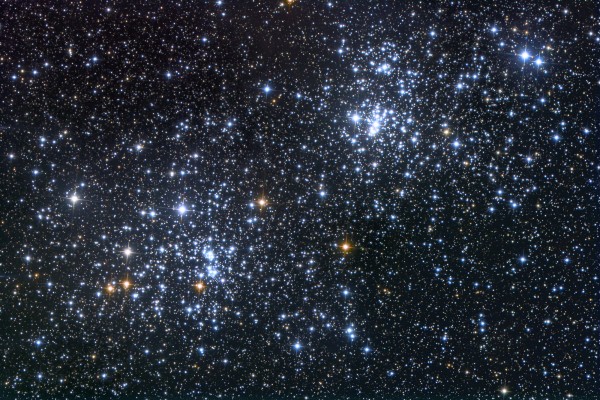


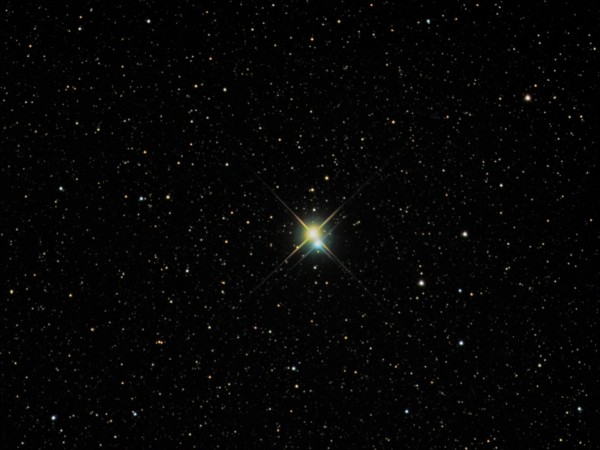



A while ago, for my then-local astronomy club's website, I was starting to put together a series of similar articles, but focusing more on what one could do to overcome a light-polluted sky, probably around 8 to 9 on that Bortle scale -- the name of the club was Urban Stargazers, after all. I was focusing (no pun intended) more on small telescopes, light shields, image stacking and enhancement, and the like. Even in skies like that, with a mere 4" SCT, I managed to capture a few photons from the brightest quasar 3C 273 (I think, that's off the top of my head) with a regular consumer camera (Canon Powershot A75, to be precise).
Unfortunately, I've noticed that the newer consumer cameras seem to be doing away with manual shutter speeds, and/or having shorter maximum exposure times. I think my next one is going to have to be rather more expensive, thanks to the march of technology. :-\
P.S. It's Albireo, not Alberio.
Thanks Randy! Believe it or not, I've made (and corrected) the Albireo misspelling mistake many times, and can't seem to get it through my head, even though when I was i grad school (at Univ. of Florida) the local astronomy club referred to it as "the Gator star" since UF's colors are orange and blue.
Maybe this will make it stick; thanks!
Disappointing that it isn't covered how you get the hardware firmly supported at the 45-or-so degree angle required to line the hinges up with the Earth's rotation axis.
I like the simplicity. When I was younger and more ambitious I would have gone for two independent screw jacks (no fixed axis) driven by steppers, with a microcontroller to generate the pulses. And a lovely math problem to get the varying frequencies required!
Ol' Bab
Well, the ingenious who consider the problem will see the answer fairly quickly, Dave.
Those just wanting a free ride or spend their efforts complaining will find their efforts rewarded. Just not with illumination.
Ol' Bab,
The screw on the top of a camera tripod is an industry standard. I used a barbed nut inserted into the bottom plank. Most tripods are easily aimed and locked in place to allow the platform to work.
I could imagine the screw jack idea could work, but would be more complicated. I prefer the KISS method unless a project won't work without such herculean efforts.
Randy,
If you'd prefer to save some money, CHDK is a very powerful tool for Canon point-and-shoot cameras. The software is available for nearly every PAS Canon makes. Unless you need more MP or zoom, why not use the money you save to take a vacation to some place with a Bortle Scale 3 to 1 sky?
Canon's SX240HS has 12.1 MP and a 20x optical zoom and costs ~ $350. A DSLR is minimum $500, and for 70 - 300 mm lens you're looking at even more. Typically, the internal intervalometer of DSLRs only go to ~ 15" as well, so you'd need the $30 remote to control the camera in bulb mode to boot!
If you have a Mike's Camera nearby, they rent DSLR cameras and lenses. I was going to give that a shot before jumping into an investment like that.
The sensor on the compact cameras are half or less the area of a DSLR.
IIRC the sensor in that Canon all-in-one is 8mm. Compared to the APC size of 24mm, that's one ninth the light gathering power.
Stars, being point objects gain nothing from high resolution. The faint fuzzies need light gathering more than accuracy and a smaller sensor with more pixes fitted in them reduce the signal to noise ratio a factor of 10.
DSLRs are in a different class.
And note, for every given zoom multiplyer, the maximum time you can get away with undriven shots without streaking of the stars is reduced.
At 20x (700mm effective), you can take a shot no better than about 1 second.
To see any stars below 4th magnitude, you'd want a minute.
I own a cheapo Canon p & s camera! So I know what to do next: get CHDK! Just right in time before my trip to rural Poland :)
Thank you for this post, Richard and Ethan.
Richard:
I really wish I'd known about this CHDK back then. Of course, for all I know, it might not have been around back then; I got that camera in 2005. Now, I have an even-worse Nikon that I alluded to, having no manual settings at all. Does anyone know if there's a CHDK-equivalent for Nikons?
As for the dark-sky vacation, note that back then, I was in the middle of Milwaukee. Now, I'm living in the middle of Tucson, but fairly dark skies are just a hop, skip, & a jump away. (A month ago, I moved out from living about half a mile from where David Levy finds all those comets.)
Right now, my situation has drastically improved to where I'm probably going to be getting either a high-end "prosumer" or low-end DSLR camera in the near future. It would certainly be nice to get away from the old setup of having the camera mounted so that it's right up against the eyepiece (oh yeah, manual focus so I can set it to infinity, that's another thing missing from a lot of the newer ones), and do some prime-focus work instead.
Thanks for the suggestion of camera rental from Mike's. I think they might have closed up shop here a while ago, but I'll look into that. I hadn't know about that possibility.
Hey Wow,
Wow! Thanks for the information. My technical knowledge of photography and astronomy is definitely not at your level! I appreciate the lesson.
Richard:
Oh. Tripod.
I assumed no tripod, as, some kind of minimalist effort was called for. Back-packing, excess weight, bulk. Of course a tripod, I would use one too. Sometimes I over think.
Re complexity, that was along the same vein, to reduce weight and bulk, at a great cost to the likelihood of it ever being actually built!
I had a paper design for a telescope drive that would give say 30 minutes of observing time between resets. Scope and operator stand on a concrete platform -very low to the ground- which slowly tilts as needed to counter Earth rotation. Had carefully shaped slant bearings. And also surely was never going to happen.
Yours, Ol' Bab
You also likely have driven out there.
Gorillapod if you have one.
Or just take one of those dinner trays with a cushion underneath and use a wedge of the appropriate angle.
All you really need is to be within 10 degrees and you can manage any useful DSLR/Compact exposure times (since they aren't cooled, you can't really do much with very faint stars since the noise adds up too.
Two or three minutes is fine, up to ten minutes and you're really REALLY pushing it.
About all a much better alignment would do is allow you to use much longer focal lengths. E.g. if you can get 10 minutes "good enough" tracking with a 135mm effective focal length, you can get 2 minutes just as well [absent shaking] with a 700mm focal length. Though then you're likely going to have problems keeping it rigid enough not to wobble in the breeze.
IIRC the mount jig that is shown is known as a Haig mount.
You don't need that compicated a system unless you want a long focal length and stability.
so beautiful the space, i agree with Wow that "You don’t need that compicated a system"